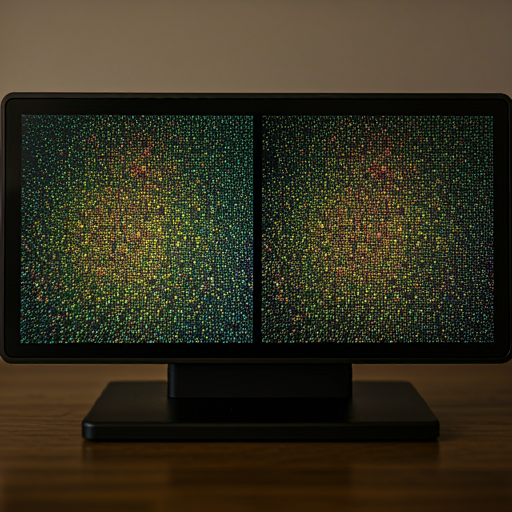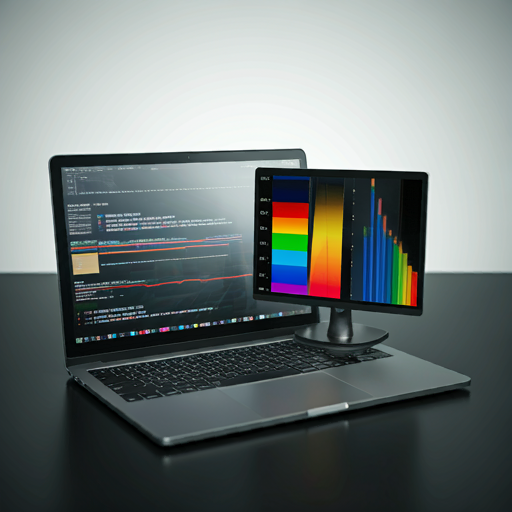Color accuracy is actually what makes the performance of LCD technology stand high above all and highly influence viewing in different multi-applications among them are graphic design, gaming, etc. The importance of knowing this matter is ever so important for our world where the relevance of digital screens becomes daily Color Accuracy in LCD Displays.

What Is Color Accuracy in LCD Displays
Color fidelity then turns into the measure that goes into how faithfully a display would reproduce colors as they might have been intended in natural reality or as perceived by their creator. It is measured in terms of the closeness of colors achieved to a certain standard or reference set like sRGB, Adobe RGB, and so on. Color Accuracy in LCD Displays reproduction is something photographers and video editors and designers really care about, because, after all, fidelity affects the quality and integrity of one’s work in the end.

Factors Impacting Color Accuracy in LCD Displays
Color accuracy of LCD displays depends on a great many factors:
1. **Panel Technology**: While the resolution is pretty much the same for all the monitors in this line, color representation characteristics make the three LCD technologies different from one another: IPS, VA, and TN. More specifically, a great number of monitors in the line belong to the IPS family-these are the ones especially dedicated to the most professional level of color representation and excellent viewing angles.
2. Backlight: It varies from LCD to LCD. Very often, backlight of an LED-enabled LCD, especially if it is a full-array configuration, with local dimming, will have better total brightness and contrast control.
3. Color Calibration LCDs are calibrated at the factory but this gets calibrated with time. Calibration using colorimeters or spectrophotometers helps maintain the accuracy of display so that it displays true colors for longer usage.
4. Color Gamut: Color gamut is the gamut in which a display falls-that is, the range of colors a display can actually produce. The color gamut serves to dictate whether a display has a wider gamut, meaning more diverse and richer color representation. Color Accuracy in LCD Displays Full Adobe RGB is required for professionals, as this means web content uses sRGB.
5. **Ambient Lighting Conditions**: Ambient conditions under which a display is meant to be used impacts the color accuracy. A high levelled ambient light washes away Color Accuracy in LCD Displays , and low ambient light conditions will produce vivid colors that can seem too bright for what they actually are. Color Accuracy in LCD Displays The display setting needs to be changed based on the environment in which it is meant to be used to achieve accurate colors.

Why Color Accuracy Counts in LCD Displays
Another aspect that color accuracy addresses is aesthetic value since actual color representation will be sure to guarantee that the work will be represented appropriately through all media. Color Accuracy in LCD Displays an example of a graphic designer’s job would appear different on the ordinary monitor in comparison to its appearance by print medium. Shoddy production of color results may lead to pricey mistakes, miscommunications, and unsatisfying results.
Because the item is created for consumers, color accuracy suggests that it generates a much more vivid appearance to the movie scene of a video game or editing a photo. More customers will look at the content as if it appeared life-like. Together with the popularity of HDR, there is dynamic range that demands even closer color reproduction.
Improving Color Accuracy in LCD Displays
This is where new technology and techniques to improve accuracy in color will developed in LCD displays. Some of the newer technologies lined up will include quantum dots and OLED display with superior color performance as well as a greater gamut of color. Color Accuracy in LCD Displays This technology improves the reproduction of colors by emitting wavelengths of given light that would make for richer colors and better accuracy.
Furthermore, the manufacturers add a lot of value in putting color calibration in their products, thus the buyer gets from the box the reproducing color pictures.
Conclusion
One of the functionalities for LCD displays is color accuracy by both professional and ordinary users. Knowing what influences color reproduction would likely thereby allow much more knowledge on the part of consumers when they are in a position to have to make choices involving displays. With the ever-changing technology, perfecting color accuracy will always be there to enrich our visual experiences within our digital lives.
FAQS
How do LCD screens produce color ?
An LCD screen produces different colors using color filters and varying the intensity of the backlight. Each pixel on an LCD screen is made up of sub-pixels that are red, green, and blue. By varying the intensity of light that passes through these sub-pixels, an LCD screen can produce a full spectrum of colors.
Pingback: Best 9 Resolution in LCDs